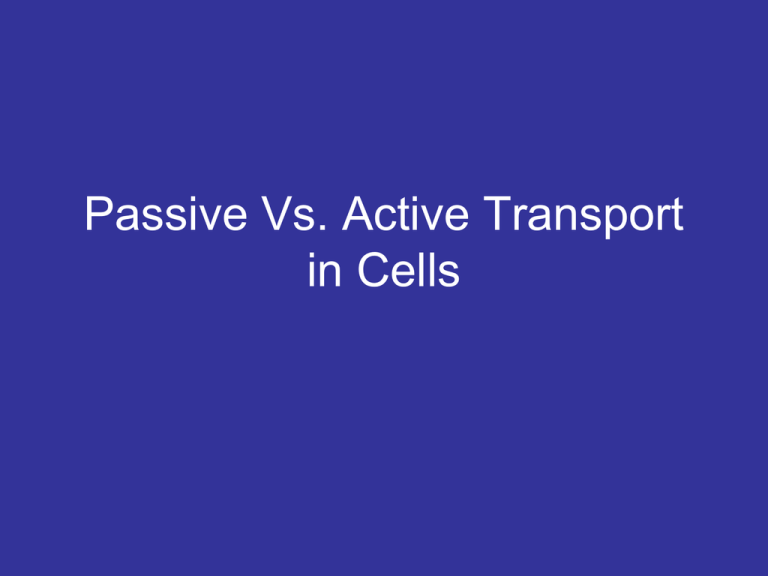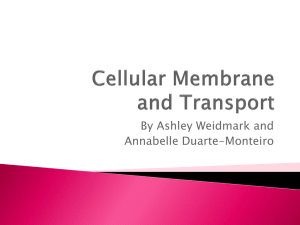Passive Vs. Active Transport
advertisement

Passive Vs. Active Transport in Cells Mini-Lab Carrot Sticks Task: Observe the two carrot sticks that you have been given and answer the following questions. 1. Create a hypothesis on the following topic question: What happened to the cells in one carrot stick to make them different? 2. What is the main difference between the two carrot sticks? 3. Which carrot stick was soaked in salt water? How do know, without tasting the carrot stick? 4. Answer the following questions after our discussion: Was your hypothesis correct? How can you change it to make it correct, based on our discussion? What is passive transport? • Questions: What part of a cell allows things like sugar, water, and salt in and out of its environment. • Cell Membrane • Passive Transport: The movement of substances through the cell membrane without the input of energy (force). • Acts like a screen door: Air is allowed in, yet bugs are not. • Small particles do not require force. What is diffusion? • What takes place in your body when a coach ask you to “warm up”? • The oxygen you are taking in is being passed to all the cells in your body. • What allows this process to take place? • Diffusion: A type of passive transport where molecules move from an area where their is relatively more of them to an area where there is relatively less. • Diffusion will stop will stop when equilibrium is reaches. • Why do you pull muscles when you don’t warm-up? • The muscle that you hurt did not receive enough oxygen filled cells. How does temperature effect diffusion? • Mini-lab – Conclusion: Heat increases the rate of diffusion. What is osmosis? • Osmosis: The diffusion of water through a cell membrane. • Water will leave a cell when there is not the same amount of water inside and outside the cell. • When plant cells loose water the cell membrane pulls away from the cell wall. – Why do plants become limp in the summer time? What is active transport? • Active Transport: When an input of energy is required to move materials through a cell membrane. – How do plant roots get their nutrients? • Transport protein pulls the nutrient through the cell membrane. Diffusion/Osmosis Interactive Lab • http://mw.concord.org/modeler1.3/mirror/c hemistry/diffusion.html EOG Test Prep • • Passive vs. Active Transport Review: http://glencoe.mcgrawhill.com/sites/0078617898/student_view0/unit5/chapter17/section_2_self-check_quizeng_.html Cell Process EOG Questions: http://glencoe.mcgrawhill.com/sites/0078617898/student_view0/unit5/chapter17/standardized_test_practice. html











